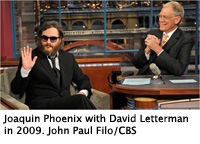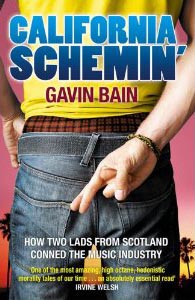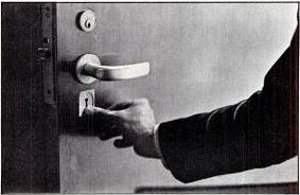For me, executing a media prank is akin to tossing a pebble in the pop culture pond to observe what sort of patterns emerges—studying the ripple effect. Just send out a press release, cross your fingers, and see how the news media reacts. Another thing I discovered a long time ago is that a prankish deception can help kick start an honest discussion about important topics of the day. It is in that sense that you can think of a prank as a kind of eccentric op-ed piece, or something to that effect. Early on, when I was an undergraduate, I discovered that it is cheap and relatively easy to pull off a prank. I spent less than two dollars to pull off my first big media intervention, which I did as a class project—earning me an “A” for the class and three credits toward my appropriately named B.S. degree. It resulted in front page newspaper stories, appearances on NBC local news affiliates across the South, and, yes, even an appearance on CNN. All I needed was a few twenty-nine cent stamps and a little imagination.
Top 10 PC Pranks
Unclick-able desktop
Allright, this one is really old but sometimes users will not know what happened. Just make a screenshot of your desktop by pressing "Print Screen" on your keyboard (sometimes shown as "Print Scrn"). Now go to Paint and Paste (Ctrl+V). You should now have an image of your desktop. Save the image to your PC (not on your desktop) and save it as BMP. You'll now have the file like this:C:/Desktop.bmp.
Next, right-click on your desktop and select Properties. Select the tab Desktop and click Browse... Navigate to your screenshot and press OK to set it as your background. You're almost done now.
Right-click your desktop again and navigate to "Arrange icons by" and uncheck "Show desktop icons". There you have it, the icons on the desktop can not be clicked anymore.Desktop upside down
Do you still have the image from the previous prank? Open it again in Paint. Now rotate the image (Ctrl+R) and set it to 180 degrees. Save to file again as BMP, like this:C:/Potksed.bmp.
Now set the image again as your background and there you have it: Your desktop is turned upside down. But wait: The taskbar at the bottom is still there? Right-click on it and select Properties. On the Taskbar tab, select the Auto-hide the taskbar check box. Press OK to save the changes.Strange sounds
A PC has some build-in audio files that are played when doing something. For example, when you start navigating you'll hear a "click" and when you disconnect a USB device you'll hear another sound. Change these sounds into something that you want!
First, search on the internet for the correct audio file (Example: Farts, Screams etc.). If the file is in MP3 format, convert them to WAV. Save the WAV files toC:/WINDOWS/Media/.
Now go to Start > Settings > Control Panel and double click on "Sounds and Audio Devices". Go to the tab Sounds and look for the correct sound in the list that you want to change. Change it by selecting the event and clicking on Browse... Navigate and select your new WAV file and press OK to save.
Be creative and your prank will succeed, just like this startup sound prank.Boogieman
Normally, WAV files are played with Windows Media Player. In this joke, you don't want this to happen. We'll write a VBS-file (Visual Basic) in this joke that will run audio files that you can't see.
Open up Notepad and copy the following code:
strSoundFile = "C:\WINDOWS\Media\[YOURSOUNDFILE].wav"
Set objShell = CreateObject("Wscript.Shell")
strCommand = "sndrec32 /play /close" & chr(34) & strSoundFile & chr(34)
objShell.Run strCommand, 0, False
Change the [YOURSOUNDFILE] to the sound file you want to play. Now save the file to your harddisk, like this:C:/Sound.vbs. Double-click the VBS file to try if it works.
You probably want to play these files automaticly. You can do this by creating tasks. Go to Start > All programs > Accessories > System Tools > Scheduled Tasks. A new window will appear. Double click on "Add scheduled task" and follow the instructions. Select your VBS file when the wizard asks if you want to open a software application. You want your PC to scream at 4 AM?Shortcuts changed
Pretty corny joke, but still one that can drive other users insane. Shortcuts are nothing more than files pointing to other files that they should startup. For example, if you have a Windows Media Player shortcut on your desktop, right click on the shortcut and select Properties. The Target will be something like:C:/Program Files/Windows Media Player/wmplayer.exe. Change this line into another one, likeC:/Program Files/MSN Messenger/msnmsgr.exefor MSN Messenger. Press OK to save the changes.
Probably the icon will have changed too. No problem about that, you can change that. Right-click the shortcut and select Properties. Choose the Shortcut tab. Click on the Change Icon button and navigate to your previous program, such as Windows Media Player. Click "Open" to select the file and press OK to save.Format C:
Formatting is what users are very afraid of. Go to RJLSoftware and download FakeFormat. The title is self-explaining: It'll look like as if you're formatting your PC. Additionally, the creators from this program disallow the functionality of shutting down. Double trouble!"The Finger"
And while you're still at RJLSoftware don't forget to download The Finger. This little program will change your cursor into another finger and you'll already have guessed which one it is. Make sure you check the command line options. Place the EXE file in de startup folder of your PC and wait untill other users find out.Haunted DVD-/CD-Player
Software can have control over hardware. If you used Nero, you'll probably noticed that, when you're done coping a CD / DVD, the CD / DVD will be ejected automaticly. Why not make use of this function? Go to cd-eject-tool.com and download the program. The specialty about this program, is that you can create shortcuts that directly drive the program. Create a shortcut that opens the CD / DVD drive and put it in the scheduele and wait for your victim.Melting Desktop
Go to Soft4fun and download the "ScreenSmelter". When you run this program, it'll look like as if the desktop is melting in front of your nose. Make it a task and nobody will know what happened. Except for you.Fatal Error
What can I say, an image (or movie) tells us more than 1000 words. Watch this movie on how to create a fake fatal error message that you can customize.
October 6, 2010
 Fox News reported that Los Angeles is going to spend $1 billion on jetpacks that can fly a person up to 63 miles per hour and soar to heights of 8,000 feet.
Fox News reported that Los Angeles is going to spend $1 billion on jetpacks that can fly a person up to 63 miles per hour and soar to heights of 8,000 feet.But this is one head-in-the-clouds idea that would never get off the ground, not even in the City of Angels.
“We certainly haven’t bought any jetpacks,” police chief Charlie Beck told the LA Times. “We haven’t bought [squad] cars for two years.”
Watch the video as captured by Mediaite:
Joaquin Phoenix & Casey Affleck Expose Themselves
posted by ModeratorFiled under: Media Pranks, Pranksters
Update from news.softpedia.com, September 21, 2010: David Letterman Was In on the Joaquin Phoenix Hoax
Documentary? Better Call It Performance Art
by Michael Cieply
The New York Times
September 16, 2010
Casey Affleck wants to come clean.
 South Pasadena, Calif. His new movie, “I’m Still Here,” was performance. Almost every bit of it. Including Joaquin Phoenix’s disturbing appearance on David Letterman’s late-night show in 2009, Mr. Affleck said in a candid interview at a cafe here on Thursday morning.
South Pasadena, Calif. His new movie, “I’m Still Here,” was performance. Almost every bit of it. Including Joaquin Phoenix’s disturbing appearance on David Letterman’s late-night show in 2009, Mr. Affleck said in a candid interview at a cafe here on Thursday morning.
“It’s a terrific performance, it’s the performance of his career,” Mr. Affleck said. He was speaking of Mr. Phoenix’s two-year portrayal of himself — on screen and off — as a bearded, drug-addled aspiring rap star, who, as Mr. Affleck tells it, put his professional life on the line to star in a bit of “gonzo filmmaking” modeled on the reality-bending journalism of Hunter S. Thompson.
“I’m Still Here” was released last week by Magnolia Pictures to scathing reviews by a number of critics, including Roger Ebert, who wrote that the film was “a sad and painful documentary that serves little useful purpose other than to pound another nail into the coffin.”
Documentary? Better Call It Performance Art
by Michael Cieply
The New York Times
September 16, 2010
Casey Affleck wants to come clean.
 South Pasadena, Calif. His new movie, “I’m Still Here,” was performance. Almost every bit of it. Including Joaquin Phoenix’s disturbing appearance on David Letterman’s late-night show in 2009, Mr. Affleck said in a candid interview at a cafe here on Thursday morning.
South Pasadena, Calif. His new movie, “I’m Still Here,” was performance. Almost every bit of it. Including Joaquin Phoenix’s disturbing appearance on David Letterman’s late-night show in 2009, Mr. Affleck said in a candid interview at a cafe here on Thursday morning.“It’s a terrific performance, it’s the performance of his career,” Mr. Affleck said. He was speaking of Mr. Phoenix’s two-year portrayal of himself — on screen and off — as a bearded, drug-addled aspiring rap star, who, as Mr. Affleck tells it, put his professional life on the line to star in a bit of “gonzo filmmaking” modeled on the reality-bending journalism of Hunter S. Thompson.
“I’m Still Here” was released last week by Magnolia Pictures to scathing reviews by a number of critics, including Roger Ebert, who wrote that the film was “a sad and painful documentary that serves little useful purpose other than to pound another nail into the coffin.”
Rush-ing to Judgement
posted by ModeratorFiled under: Media Pranks
Limbaugh Taken In: The Judge Was Not Loaded for Bear
by Kevin Sack
The New York Times
September 15, 2010
 Pensacola, Fla. — Anyone listening to Rush Limbaugh’s radio show Tuesday could be forgiven for thinking that Judge Roger Vinson has the federal government dead in his sights.
Pensacola, Fla. — Anyone listening to Rush Limbaugh’s radio show Tuesday could be forgiven for thinking that Judge Roger Vinson has the federal government dead in his sights.
Mr. Limbaugh spent some time profiling Judge Vinson, a senior judge on the Federal District Court in Pensacola, who had just announced he would allow a legal challenge to the new health care law to advance to a full hearing. The conservative radio host informed his listeners that the judge was an avid hunter and amateur taxidermist who once killed three brown bears and mounted their heads over his courtroom door to “instill the fear of God into the accused.”
“This,” Mr. Limbaugh said, “would not be good news” for liberal supporters of the health law.
But, in fact, Judge Vinson has never shot anything other than a water moccasin (last Saturday, at his weekend cabin), is not a taxidermist and, as president of the American Camellia Society, is far more familiar with Camellia reticulata than with Ursus arctos.
by Kevin Sack
The New York Times
September 15, 2010
 Pensacola, Fla. — Anyone listening to Rush Limbaugh’s radio show Tuesday could be forgiven for thinking that Judge Roger Vinson has the federal government dead in his sights.
Pensacola, Fla. — Anyone listening to Rush Limbaugh’s radio show Tuesday could be forgiven for thinking that Judge Roger Vinson has the federal government dead in his sights.Mr. Limbaugh spent some time profiling Judge Vinson, a senior judge on the Federal District Court in Pensacola, who had just announced he would allow a legal challenge to the new health care law to advance to a full hearing. The conservative radio host informed his listeners that the judge was an avid hunter and amateur taxidermist who once killed three brown bears and mounted their heads over his courtroom door to “instill the fear of God into the accused.”
“This,” Mr. Limbaugh said, “would not be good news” for liberal supporters of the health law.
But, in fact, Judge Vinson has never shot anything other than a water moccasin (last Saturday, at his weekend cabin), is not a taxidermist and, as president of the American Camellia Society, is far more familiar with Camellia reticulata than with Ursus arctos.
Urban Foxhunting Hoax Explained
posted by ModeratorFiled under: Creative Activism, Media Pranks, Pranksters
Submitted by Josh Jaspers:
Urban fox hunt video was hoax aimed at the media, say film-makers
by Paul Lewis
Guardian.co.uk
6 August 2010
Chris Atkins explains how he hoaxed the press into printing stories about urban fox hunters.
It was the internet video that sparked a media outcry: grainy footage that seemed to show four masked men drugging a fox and later beating it to death with cricket bats in a London park that was posted on YouTube and Facebook earlier this week.
But the Guardian can reveal that the new sport of “urban foxhunting” was an elaborate hoax. The film-makers, Chris Atkins and Johnny Howorth, said no real foxes were harmed in the film, which was intended as a satirical swipe at “media hysteria” over the danger of urban foxes.
Animal rights campaigners had expressed fury over the “bloodthirsty” huntsmen, eliciting the support of MPs on Twitter and prompting an inquiry by the Metropolitan police’s wildlife crime unit.
Urban fox hunt video was hoax aimed at the media, say film-makers
by Paul Lewis
Guardian.co.uk
6 August 2010
Chris Atkins explains how he hoaxed the press into printing stories about urban fox hunters.
It was the internet video that sparked a media outcry: grainy footage that seemed to show four masked men drugging a fox and later beating it to death with cricket bats in a London park that was posted on YouTube and Facebook earlier this week.
But the Guardian can reveal that the new sport of “urban foxhunting” was an elaborate hoax. The film-makers, Chris Atkins and Johnny Howorth, said no real foxes were harmed in the film, which was intended as a satirical swipe at “media hysteria” over the danger of urban foxes.
Animal rights campaigners had expressed fury over the “bloodthirsty” huntsmen, eliciting the support of MPs on Twitter and prompting an inquiry by the Metropolitan police’s wildlife crime unit.
Virginity for Sale?
posted by ModeratorFiled under: Media Pranks
Is it a hoax or is it porn? Joey Skaggs is interviewed for AOL News:
Hoax Experts Cast Doubt on Virgin Reality Show
by David Moye
AOLNews.com
May 17, 2010
Four Australian virgins are allegedly in Las Vegas to sell off their virginity to the highest bidder, but hoax experts say the only ones getting screwed are the people who believe it’s real.
Australian documentary filmmaker Justin Sisely is getting international publicity for planning a reality show in which men and women will auction their virginity to the highest bidders — but hoax experts are casting doubt on the whole enterprise.

After a yearlong audition process in Australia, Sisely says he has found six virgins — five men and one woman — willing to broadcast their first-times on prime time for about $17,700 each, as well as 90 percent of their sale price. Two of those virgins, Ben Smith and “Veronica Peach,” are reportedly in Nevada after the Australian government threatened to hit Sisely with prostitution charges if he filmed the show in his home country.
Now Sisely is claiming the auction will take place in a Nevada brothel, which will receive the remaining 10 percent of the sale prices.
Although bids supposedly will be placed online before the final auction, experts in both hoaxes and the sex industry doubt the whole affair is real or will ever happen.
Hoax Experts Cast Doubt on Virgin Reality Show
by David Moye
AOLNews.com
May 17, 2010
Four Australian virgins are allegedly in Las Vegas to sell off their virginity to the highest bidder, but hoax experts say the only ones getting screwed are the people who believe it’s real.
Australian documentary filmmaker Justin Sisely is getting international publicity for planning a reality show in which men and women will auction their virginity to the highest bidders — but hoax experts are casting doubt on the whole enterprise.

After a yearlong audition process in Australia, Sisely says he has found six virgins — five men and one woman — willing to broadcast their first-times on prime time for about $17,700 each, as well as 90 percent of their sale price. Two of those virgins, Ben Smith and “Veronica Peach,” are reportedly in Nevada after the Australian government threatened to hit Sisely with prostitution charges if he filmed the show in his home country.
Now Sisely is claiming the auction will take place in a Nevada brothel, which will receive the remaining 10 percent of the sale prices.
Although bids supposedly will be placed online before the final auction, experts in both hoaxes and the sex industry doubt the whole affair is real or will ever happen.
No Fun with Franco and Eva Mattes
posted by ModeratorFiled under: Culture Jamming and Reality Hacking, Media Pranks
From Franco & Eva Mattes, aka 0100101110101101.ORG, May 1, 2010:
Artist Commits Suicide Online as a Work of Art (well, sort of)
 Thousand of people watched powerless while a person was hanging from the ceiling, slowly swinging, for hours and hours. It happened yesterday, in the popular website Chatroulette, where people from all over the world can anonymously and randomly see each other through their webcams and chat with perfect strangers.
Thousand of people watched powerless while a person was hanging from the ceiling, slowly swinging, for hours and hours. It happened yesterday, in the popular website Chatroulette, where people from all over the world can anonymously and randomly see each other through their webcams and chat with perfect strangers.
The hanging man was in fact Brooklyn based artist Franco Mattes, and the whole scene a set up. The artist recorded all the performance and than posted it online. In the video, titled “No Fun”, one can see all possible reactions, from the most predictable to the most unthinkable: some laugh, believing it’s a joke, some seem to be completely unmoved, some insult the supposed-corpse and some, more cynical, take pictures with their phones. Apparently, out of several thousand people, only one called the police. Watching the video can be a strange experience, at times exhilarating as well as disturbing.
No Fun – Eva and Franco Mattes from Franco Mattes on Vimeo.
Artist Commits Suicide Online as a Work of Art (well, sort of)
 Thousand of people watched powerless while a person was hanging from the ceiling, slowly swinging, for hours and hours. It happened yesterday, in the popular website Chatroulette, where people from all over the world can anonymously and randomly see each other through their webcams and chat with perfect strangers.
Thousand of people watched powerless while a person was hanging from the ceiling, slowly swinging, for hours and hours. It happened yesterday, in the popular website Chatroulette, where people from all over the world can anonymously and randomly see each other through their webcams and chat with perfect strangers.The hanging man was in fact Brooklyn based artist Franco Mattes, and the whole scene a set up. The artist recorded all the performance and than posted it online. In the video, titled “No Fun”, one can see all possible reactions, from the most predictable to the most unthinkable: some laugh, believing it’s a joke, some seem to be completely unmoved, some insult the supposed-corpse and some, more cynical, take pictures with their phones. Apparently, out of several thousand people, only one called the police. Watching the video can be a strange experience, at times exhilarating as well as disturbing.
So, Are You Going to Kate’s Party?
posted by ModeratorFiled under: Media Pranks
Serial prankster admits to Kate’s party hoax
Yahoo!7
April 27, 2010
 The serial online prankster David Thorne is at it again, this time creating the party of the century on social networking site, Facebook.
The serial online prankster David Thorne is at it again, this time creating the party of the century on social networking site, Facebook.
Thorne, known for his hilarious attempt to pay a bill with a spider drawing, has created a new viral phenomenon with his hoax Facebook event, Kate’s Party.
Yahoo!7
April 27, 2010
 The serial online prankster David Thorne is at it again, this time creating the party of the century on social networking site, Facebook.
The serial online prankster David Thorne is at it again, this time creating the party of the century on social networking site, Facebook.Thorne, known for his hilarious attempt to pay a bill with a spider drawing, has created a new viral phenomenon with his hoax Facebook event, Kate’s Party.
Remembering Silibil N’ Brains & Other Music Industry Pranks
posted by ModeratorFiled under: Media Pranks
Hoax is where the art is: music biz scams
by Jane Graham
The Guardian
24 April 2010
With the story of how rap-scallions Silibil N’Brains fooled America hitting shelves, Jane Graham looks at some more music industry hoaxes
 As international fraudsters, they had brassier balls than the Enron board and more starry-eyed optimism than Bernie Madoff. But like most myopic voyagers’ tales, Gavin Bain and Billy Boyd’s adventure ended in humiliating exposure, broken relationships and empty pockets. Not great news for their families or psychiatrists, but their brilliant scam does make for a ripping yarn, published this month in the form of Bain’s mea culpa, California Schemin’
As international fraudsters, they had brassier balls than the Enron board and more starry-eyed optimism than Bernie Madoff. But like most myopic voyagers’ tales, Gavin Bain and Billy Boyd’s adventure ended in humiliating exposure, broken relationships and empty pockets. Not great news for their families or psychiatrists, but their brilliant scam does make for a ripping yarn, published this month in the form of Bain’s mea culpa, California Schemin’ (Simon & Schuster).
(Simon & Schuster).
by Jane Graham
The Guardian
24 April 2010
With the story of how rap-scallions Silibil N’Brains fooled America hitting shelves, Jane Graham looks at some more music industry hoaxes
 As international fraudsters, they had brassier balls than the Enron board and more starry-eyed optimism than Bernie Madoff. But like most myopic voyagers’ tales, Gavin Bain and Billy Boyd’s adventure ended in humiliating exposure, broken relationships and empty pockets. Not great news for their families or psychiatrists, but their brilliant scam does make for a ripping yarn, published this month in the form of Bain’s mea culpa, California Schemin’
As international fraudsters, they had brassier balls than the Enron board and more starry-eyed optimism than Bernie Madoff. But like most myopic voyagers’ tales, Gavin Bain and Billy Boyd’s adventure ended in humiliating exposure, broken relationships and empty pockets. Not great news for their families or psychiatrists, but their brilliant scam does make for a ripping yarn, published this month in the form of Bain’s mea culpa, California Schemin’LiteratEye #48: Newspaper Nostalgia: Biped Beavers, Libidinous Man-Bats on the Moon
by W.J. Elvin IIIFiled under: Literary Hoaxes, Media Pranks
Here’s the forty-eighth installment of LiteratEye, a series found only on The Art of the Prank Blog, by W.J. Elvin III, editor and publisher of FIONA: Mysteries & Curiosities of Literary Fraud & Folly and the LitFraud blog.
and the LitFraud blog.
LiteratEye #48: Newspaper Nostalgia: Biped Beavers, Libidinous Man-Bats on the Moon
By W.J. Elvin III
January 22, 2010
 The New York Times, you may have noticed, plans to start charging for portions of its web content. One assumes the portions will be the those readers find most interesting.
The New York Times, you may have noticed, plans to start charging for portions of its web content. One assumes the portions will be the those readers find most interesting.
So then patronage will fall off, and with fewer readers there will be fewer advertisers, and so on until we hear the death rattle of yet another newspaper. Well, in the case of the Times it probably won’t be quite that bad, but the Internet era has certainly seen the downsizing or demise of quite a few news publications.
How bad is it? MSN Money lists newspaper subscriptions among its top ten things not to buy in 2010, citing the popular alternatives.
Which is too bad, because newspapers and news magazines have been a great vehicle for the perpetuation of hoaxes. No doubt our host, Joey Skaggs, is indebted to more than a few for taking the bait. In my own forty years or so in the news business I noticed a fairly cavalier attitude toward great stories that seemed at least a little fishy: “Print first, ask questions later.”
In the good old days, before newspapers got all goody-goody ethical, editors and reporters were among the top pranksters.
LiteratEye #48: Newspaper Nostalgia: Biped Beavers, Libidinous Man-Bats on the Moon
By W.J. Elvin III
January 22, 2010
 The New York Times, you may have noticed, plans to start charging for portions of its web content. One assumes the portions will be the those readers find most interesting.
The New York Times, you may have noticed, plans to start charging for portions of its web content. One assumes the portions will be the those readers find most interesting.So then patronage will fall off, and with fewer readers there will be fewer advertisers, and so on until we hear the death rattle of yet another newspaper. Well, in the case of the Times it probably won’t be quite that bad, but the Internet era has certainly seen the downsizing or demise of quite a few news publications.
How bad is it? MSN Money lists newspaper subscriptions among its top ten things not to buy in 2010, citing the popular alternatives.
Which is too bad, because newspapers and news magazines have been a great vehicle for the perpetuation of hoaxes. No doubt our host, Joey Skaggs, is indebted to more than a few for taking the bait. In my own forty years or so in the news business I noticed a fairly cavalier attitude toward great stories that seemed at least a little fishy: “Print first, ask questions later.”
In the good old days, before newspapers got all goody-goody ethical, editors and reporters were among the top pranksters.
Navy Needs Anti-hoax Vaccine
posted by ModeratorFiled under: Media Pranks, Prank Busters
Reports of sailors dying from the H1N1 flu vaccine are a hoax, Navy says
LA Military Headlines Examiner
by Mark Nero
October 31, 2009
 A report popping up in emails and on blogs in recent weeks that sailors aboard a ship have died from the vaccine for the H1N1 virus is a complete hoax, according to the Navy Bureau of Medicine and Surgery.
A report popping up in emails and on blogs in recent weeks that sailors aboard a ship have died from the vaccine for the H1N1 virus is a complete hoax, according to the Navy Bureau of Medicine and Surgery.
The false report, which has circulating online for several weeks, claims that the vaccine is the cause of the swine flu and not the cure and that the crew of an unnamed naval vessel was sickened by the vaccine.
“Of the 347 man crew that were vaccinated, 333 contracted the H1N1 flu FROM THE VACCINE,” reads one false e-mail that has been circulated on several blogs. “Two died … and 331 survived. Only 14 of the 347 vaccinated sailors did not show any ill effects from the vaccine.”
LA Military Headlines Examiner
by Mark Nero
October 31, 2009
 A report popping up in emails and on blogs in recent weeks that sailors aboard a ship have died from the vaccine for the H1N1 virus is a complete hoax, according to the Navy Bureau of Medicine and Surgery.
A report popping up in emails and on blogs in recent weeks that sailors aboard a ship have died from the vaccine for the H1N1 virus is a complete hoax, according to the Navy Bureau of Medicine and Surgery.The false report, which has circulating online for several weeks, claims that the vaccine is the cause of the swine flu and not the cure and that the crew of an unnamed naval vessel was sickened by the vaccine.
“Of the 347 man crew that were vaccinated, 333 contracted the H1N1 flu FROM THE VACCINE,” reads one false e-mail that has been circulated on several blogs. “Two died … and 331 survived. Only 14 of the 347 vaccinated sailors did not show any ill effects from the vaccine.”
Skaggs, Blags and Rags: Hoaxes and the Press
by Mark BorkowskiFiled under: Culture Jamming and Reality Hacking, Media Pranks, Publicity Stunts
Submitted by Mark Borkowski from Borkowski Blog. Mark is author of The Fame Formula: How Hollywood’s Fixers, Fakers and Star Makers Shaped the Publicity Industry
Skaggs, Blags and Rags: Hoaxes and the Press
October 16th, 2009
If you want proof that stunts are an art form, your best bet is to head down to the Tate Modern’s Pop exhibition and take a long, hard look at the Andy Warhol and Jeff Koons exhibits. Here are two prime examples of early stops at one of the stations of the cross of Consumerism, part of its steady progress to becoming the prime 21st Century religion.
And proof is needed that stunts are an art form – they are making something of a comeback at the moment, but the latest examples – the Starsuckers film and Balloon Boy – are in need of a bit of spit and polish if they are to really shine.
Skaggs, Blags and Rags: Hoaxes and the Press
October 16th, 2009
If you want proof that stunts are an art form, your best bet is to head down to the Tate Modern’s Pop exhibition and take a long, hard look at the Andy Warhol and Jeff Koons exhibits. Here are two prime examples of early stops at one of the stations of the cross of Consumerism, part of its steady progress to becoming the prime 21st Century religion.
And proof is needed that stunts are an art form – they are making something of a comeback at the moment, but the latest examples – the Starsuckers film and Balloon Boy – are in need of a bit of spit and polish if they are to really shine.
Michael Jackson Not Dead? [English & German]
posted by ModeratorFiled under: Media Pranks
Editor’s note: Watch how this hoax was perpetrated in a behind-the-scenes video at the end of this post…
Hoax video of Michael Jackson creates online stir
by Kirsten Grieshaber
Yahoo! News / Associated Press
September 1, 2009
Berlin – A hoax video purportedly showing Michael Jackson emerging from a coroner’s van was an experiment aimed at showing how quickly misinformation and conspiracy theories can race across the Internet, German broadcaster RTL said Tuesday.
The video was posted by RTL on YouTube for a single day a week ago and received 880,000 hits. The broadcaster has since removed the video from YouTube, but it has been picked up by other Web sites around the world.
Hoax video of Michael Jackson creates online stir
by Kirsten Grieshaber
Yahoo! News / Associated Press
September 1, 2009
Berlin – A hoax video purportedly showing Michael Jackson emerging from a coroner’s van was an experiment aimed at showing how quickly misinformation and conspiracy theories can race across the Internet, German broadcaster RTL said Tuesday.
The video was posted by RTL on YouTube for a single day a week ago and received 880,000 hits. The broadcaster has since removed the video from YouTube, but it has been picked up by other Web sites around the world.
Microsoft Viral Stunt
posted by ModeratorFiled under: Media Pranks, Publicity Stunts Submitted by Paul C. from Yahoo! Finance, by Chris Nichols, August 13, 2009:
Microsoft’s Marketing Stunt Goes Viral
Turns out the official recipe for fun and the way to create an Internet sensation are the same: Start with a megacorporation, add in a group of Germans on a hillside, liberally take advantage of slick editing software and let the power of the Web do its thing.
If you spend any time online, have a TV or know anyone who does, you’ve probably heard about the latest craze blasting its way through cyberspace. In case you haven’t, a recap: A guy in a neoprene suit goes barreling down a waterslide, flies off the end and through the air, traveling a great distance, and splashes down in a tiny pool. It’s the MegaWoosh. See?
Please understand. This is a hoa






















